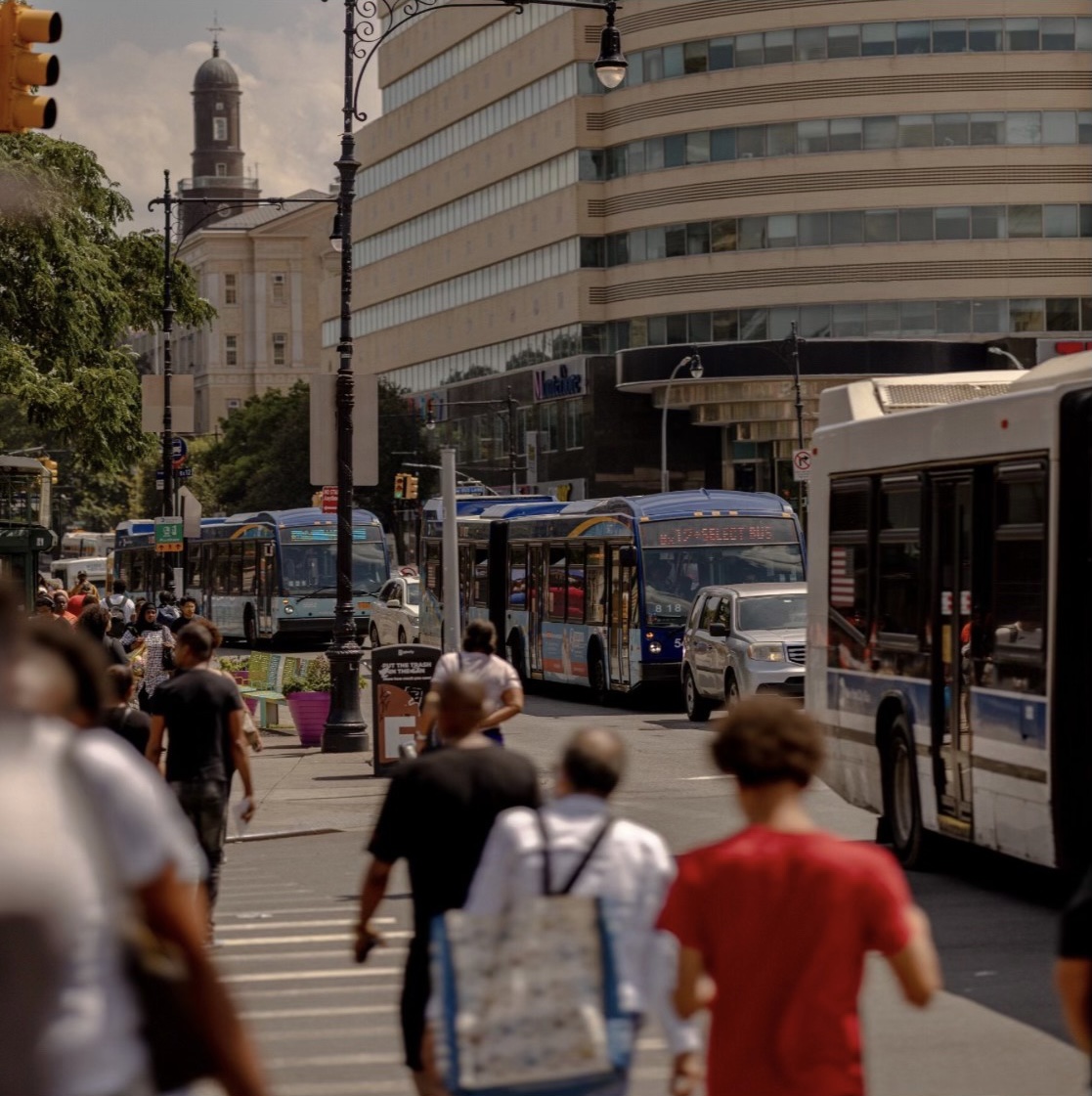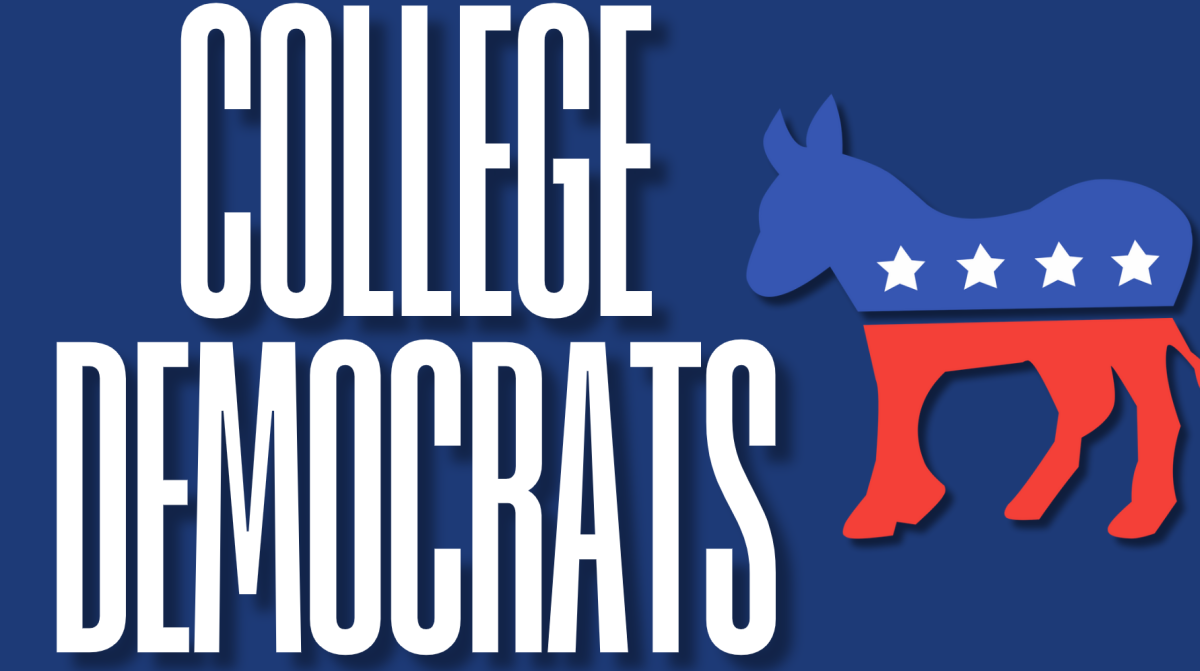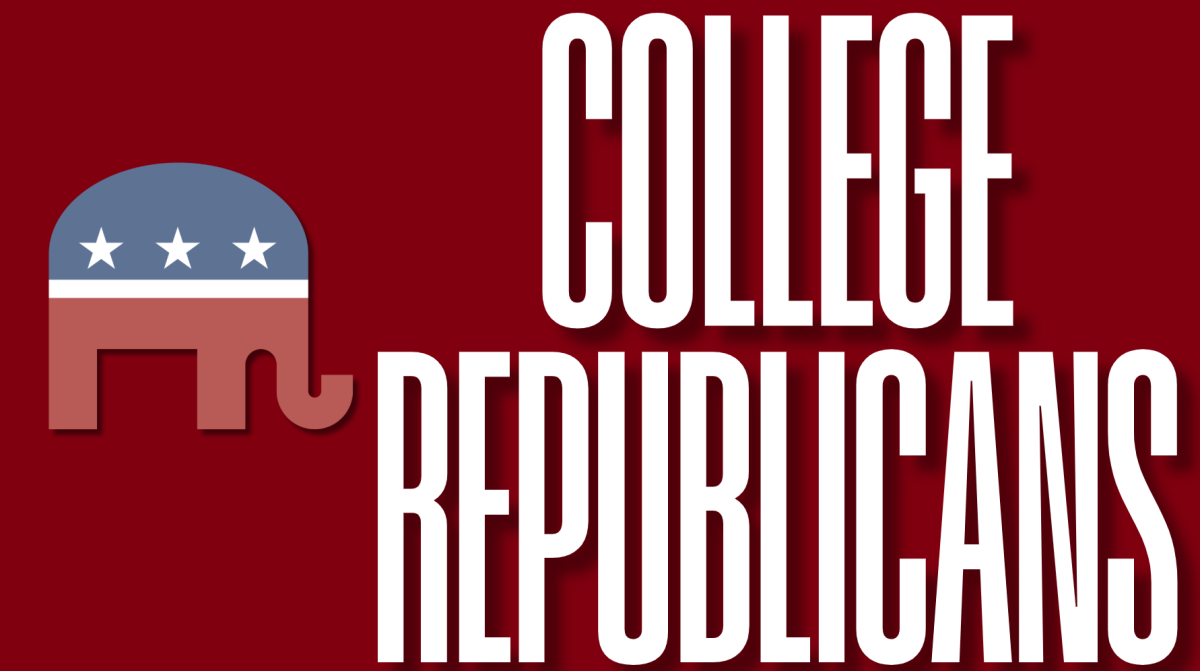Talk to most Rose Hill students and they will tell a horror story about almost getting hit by a car on Fordham Road — the main, multi-lane road that borders Fordham’s Bronx campus — but fewer will be able to tell the story of the deep and bitter brawl currently raging from Webster Ave to Jerome Ave. At the heart of this tale is the overwhelming sentiment that we need to address the bus situation on Fordham Road.
Fordham Road currently has limited eastbound and westbound curbside bus lanes, which are travel lanes that are restricted to buses during certain hours of the day Monday through Friday on various stretches of the road. For years, drivers, pedestrians, students, business owners and bus riders alike have complained about the trafficky, double-parked state of Fordham Road. While the area is home to the second-most popular bus route in the entire city — the Bx12 — it is also home to some of the worst bus speeds in the city, with sections of bus routes near Rose Hill averaging speeds of less than four miles per hour. This is untenable for pretty much anyone. In 2022, the Department of Transportation published a series of proposals for Fordham buses, one of which excited transit advocacy groups: a busway spanning from Webster Ave to Jerome. A busway is a more restrictive version of a bus lane that would limit traffic on that section of Fordham Road to strictly trucks, buses and emergency vehicles, and it is exactly what Fordham Road needs. By limiting vehicle traffic on Fordham Road, riders will be treated to significantly improved wait and ride times on the bus (a model that has already proven successful in other boroughs).
Most of the recent fight for Fordham Road took place over the summer, when the majority of students were not on campus. Had this battle taken place during the school year, students would have learned two things: one, many of the protests by groups like Riders Alliance have taken place mere steps from university gates, and two, Fordham University publicly opposes the implementation of a busway.
According to a May 2023 letter signed by President Tania Tetlow (representing Fordham University) in opposition to the Fordham Road busway, the main concerns of the University are the environmental ramifications of redirecting car traffic, the potential impact on local pedestrian safety and the potential impact on local businesses. Overall, they call for a reconsideration of the Department of Transportation’s Fordham Road proposals and for more research on the issue. This is not only a gross misread of the situation, but also a misleading one.
First and foremost, it completely disregards the already-published data that the Department of Transportation made publicly available at their Community Advisory Board meetings (which covers quite a few of their main concerns). But more broadly, it ignores the tenuous history of the Bronx, city transportation and the environment. The Bronx boasts some of the highest pediatric asthma, asthma hospitalization and asthma mortality rates in the entire country by a wide margin, which is due in no small part to the Cross Bronx Expressway. The implementation of a busway on Fordham Road would result in reduced car traffic — and therefore car emissions — to the area. Fordham Road shoppers surveyed by the Department of Transportation also agreed that improved bus service in the area would increase their chances of riding the bus, which would also result in reduced car traffic.
Plus, any pedestrian of Fordham Road — myself included — can tell you that the current situation is already unsafe. In just four years, 83 people were killed or significantly injured on Fordham Road between Deegan and Boston Road. Car accidents are the leading cause of injury-related death in New York. It is no big stretch to say that reducing the amount of cars on Fordham Road will positively affect pedestrian safety. And, despite the biased Arthur Avenue street survey Fordham and other opponents of the busway often cite that claims “50% of those surveyed would definitely cut back on their visits [to the Arthur Avenue area] with the implementation of a busway,” the numbers published by the Department of Transportation
paint a different story about the effect of a busway on local businesses: 86% of shoppers in the area around Fordham Road walked, biked or took public transit to their destination. Customers within walking distance to local businesses most likely do not drive to their destinations, so logically, a busway should not pose a major existential threat to any Italian restaurant or bakery on Arthur Ave. We can clearly see that all of the reasons Fordham opposes a busway are misguided at best.
The Fordham-signed letter, which was also signed by the Bronx Zoo and the New York Botanical Gardens, had no small effect on the Department of Transportation’s decision to not move forward with the busway proposal, instead choosing to move forward with their most conservative offset bus lane alternative mere days after it was published in an unsurprising move to placate these institutions rather than support the local community.
What’s most disappointing about Fordham University’s lack of support for the busway is the positive impact it would have on the residents of the Bronx, who would receive more consistent bus service and better bus speeds. Fordham’s own, publicly-posted mission statement says that “Fordham is committed to research and education that assist in the alleviation of poverty, the promotion of justice, the protection of human rights and respect for the environment.” Through the busway came an opportunity for the university to help the Bronx, and instead they turned it away. What happened to “the promotion of justice”? Or the “respect for the environment”? What about Fordham’s self-proclaimed responsibility to the city? Did the “mission” disappear?
Car proponents will lie, but numbers do not: a busway would help 85,000 riders daily, many of whom are students and employees at Fordham. I firmly believe that it is Fordham’s duty to support a community-oriented proposal with overwhelming support from the people in our neighborhood. When surveyed, 70% of local riders support a busway, and the vast majority of respondents (89%) support improving existing bus lanes and conditions on Fordham Road. 62% of households along the Bx12 corridor do not have access to a private vehicle, and an astounding 71% of those same households walk, bike or take public transit to work. The path is clear. We must implement a busway. Fordham must support a busway. True men and women (and people!) for others believe in the importance of public transportation and community justice.
Abby Dziura, FCRH ’24, is an American studies major from Cheshire, Conn.











































































































































































































Thomas Maguire • Sep 18, 2023 at 8:02 am
Since I made the daily trip to the Fordham Campus in the early ’70s I’ve seen a consistent degeneration of the business corridor of Fordham Road. The lack of vehicle owners utilizing the Fordham business community has more to do with the consistent downgrade of merchandise available to purchase on Fordham Road. The statistics used to support this bus way basically puts Fordham Road on a path to become another Jamaica Avenue. I don’t think anyone really wants that.